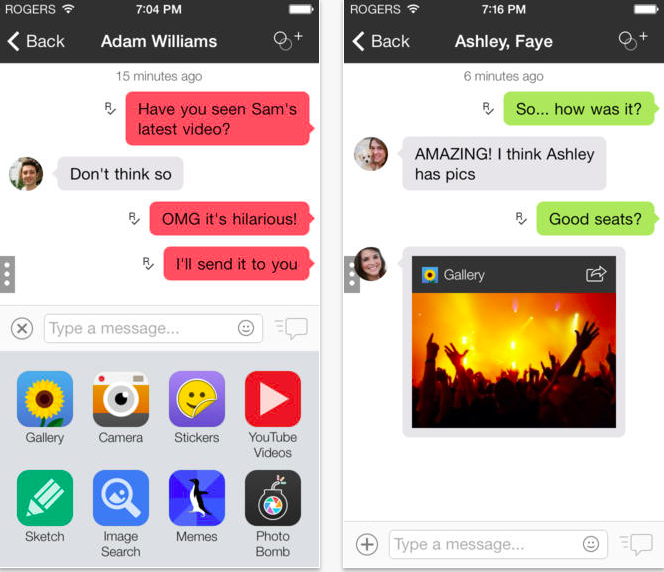
As close as we are to the holidays, companies are still vying for the attention of users’ eyes — and thumbs. With the relentless slog of messaging apps coming to market, it would be easy to forget that many incumbents are still growing at incredible rates, eclipsing what pundits thought possible only a year ago.
Today, Waterloo-based Kik announced that nearly a year after it launched a mobile-first HTML5 app platform, the company now boasts 100 million users, many of whom have used one or more of the quickly-growing library of Cards.
While Kik is still a free instant messenger at heart, Cards have given it a new method to attract users and, for the first time, earn money. When we spoke to Heather Galt, Kik’s Vice President of Marketing, in April, the company had just crossed the 50 million user mark, and was rapidly adding new utility cards, such as meme sharing and basic drawing, to the list. Since then, the company has been adding users at a daily rate of 200,000, and has announced partnerships with notable game developers, Zynga and Koa.la, the latter introducing a simple photo dress-up game, Costume Party, that surpassed a million activations in the first day.
Now, 145 million Cards have been opened over iOS and Android, the two supported mobile operating systems, and the company is making money, both from ads and sponsored partnerships such as 1D, an interactive way to share One Direction content with other Kik users. Indeed, Galt tells me that 83% of Kik Cards are opened via sharing between users, which lends the platform an inherent virality. Though the company does not admit as much, that iOS users can only add Cards via sharing (likely due to the ambiguity around whether individual Cards are considered purchases, and thus subject to Apple’s ToS) pads the statistic significantly.
April also saw the company adding $19.5 million in Series B funding, and has since expanded to offer over 30 Cards, ranging from username swaps to photo sharing services to basic games. Kik launched new versions of its iOS and Android apps this past summer, too, and reached 80 million users in mid-September, claiming 225,000 new users every day. While the growth has slowed somewhat since then, likely due to the debut of BBM for Android and iOS and Kik’s difficulty expanding into international markets, the numbers are still remarkable.
It takes some serious networking infrastructure to accommodate such growth, and Galt says the company has been spent the entire year reconfiguring and reconstructing their back-end to scale to beyond 100 million users. The fact that HTML5 is lightweight, and the Cards relatively simple, makes the transition between native and web seamless for consumers, too. It may make it difficult to integrate a singular payment system, once Kik decides to charge for certain purchases, but the company hasn’t reached that point yet.
“We always have new ideas in the pipeline from a technical, developer and user-impact perspective,” says Galt, but for now Kik is riding the wave of success.


